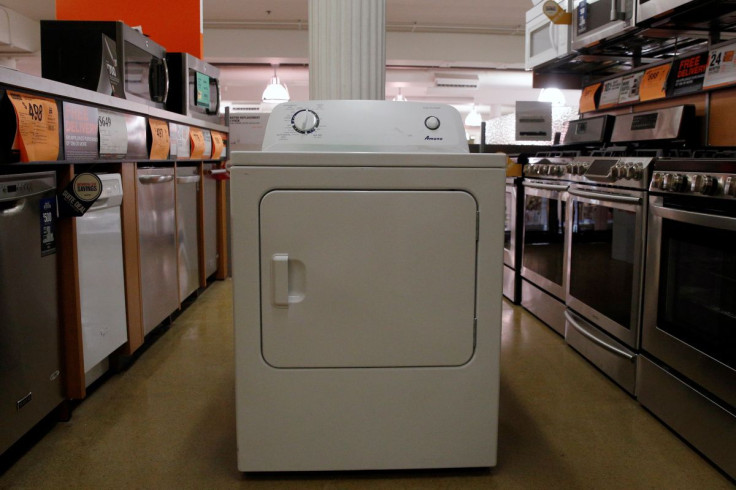Global Consumers Balk At Surging Prices For Durable Goods: Kemp

Rapidly rising prices and falling real incomes are encouraging households to postpone purchases of durable goods such as home appliances and cars, a signal that often accompanies a slowdown in the business cycle.
Expensive durables such as cars, furniture, refrigerators, stoves, televisions and computers are the most cyclically sensitive part of consumer spending and usually herald the onset of a downturn.
In his presidential address to the American Economic Association in 2017, exploring the role of narratives in propagating the business cycle, economist Robert Shiller characterised a recession as "a time when many people have decided to spend less, to make do for now with that old furniture instead of buying new, or to postpone starting a new business, [or] to postpone hiring new help in an existing business."
In the United States, there are already signs that consumer spending will decelerate in response to higher inflation, declining real incomes, and supply disruptions stemming from the pandemic and Russia's invasion of Ukraine.
Every month, the University of Michigan's Survey Research Centre conducts a telephone poll of at least 500 households selected to be broadly representative of the Lower 48 states.
Roughly 50 questions are asked covering households' own financial prospects as well as their views on the state of the economy in the near term and over the longer term (https://tmsnrt.rs/3vN0r5N).
In the latest survey, conducted in March, 57% of respondents said it was a "bad time" to purchase a major durable item, compared with only 37% who said it was a "good time".
For six months, the percentage saying it is a bad time to buy has been at the highest since 1980, and the balance between good time and bad time responses has also been at the most negative for four decades.
Some 42% of respondents said it was a bad time because of high prices, while 7% cited uncertainty about the future, 4% said they couldn't afford it, and only 1% cited interest rates.
In a separate set of questions, the latest survey found 72% of respondents thought it would be a bad time to buy an automobile in the next 12 months, compared with only 24% who thought it would be a good time.
Both the percentage of respondents saying it was a bad time to buy and the negative balance were the worst in records going back to 1978 ("Survey of consumers", University of Michigan, 2022).
Some 57% blamed high prices, compared with 5% who cited interest rates, 5% who cited future uncertainty and 4% who said they couldn't afford to buy.
In recent decades, spikes in the bad-time-to-buy measures have corresponded with end-of-cycle recessions or at least mid-cycle slowdowns ("Consumer expectations: micro foundations and macro impact", Curtin, 2019).
INEVITABLE ADJUSTMENT
Rapidly escalating prices are a major explanation for increasingly negative sentiment among U.S. households about their own finances and the economy.
The University of Michigan's composite index of consumer sentiment has tumbled to its lowest level for more than a decade and is in only the 2nd percentile for all months since 1980.
So far, consumers have been more likely to cite prices rather than affordability, interest rates or future uncertainty as the reason why it is a bad time to buy durables and vehicles.
But as real incomes diminish and interest rates continue to rise, all these other barriers to durables purchasing are likely to become more important.
To some extent, rising prices and reduced spending is an inevitable response to the supply chain problems and capacity constraints that have emerged in manufacturing and freight transportation in the wake of the pandemic.
High prices will encourage the rotation of consumer spending from durables to services such as travel, tourism and entertainment, which are only now starting to re-open after lockdowns and quarantines.
Some households will postpone major purchases to pay for higher spending on food, fuel and services, as incomes fail to keep pace with inflation.
The expected slowdown in durables spending could ease some of the pressure on commodity prices, manufacturing capacity and the freight system, but it could also have recessionary effects if the deceleration is severe.
The difference between a recessionary hard landing and an inflation-moderating soft landing is hard for forecasters to predict and policymakers to navigate with precision.
In the United States, there is a strong probability of a mid-cycle slowdown or end-of-cycle recession starting in the next few months.
In Europe, the region's proximity to the Russia/Ukraine conflict and higher energy prices mean the probability of a significant slowdown or recession is higher.
China's government has already admitted the increasing frequency of coronavirus outbreaks and strict lockdowns has hit consumer spending, in a long statement on "unleashing consumption potential" published on April 25.
The National Development and Reform Commission, the top-level economic planning agency, has promised to stabilise consumption, including in-person services, and encourage more purchasing of durables.
In lower-income countries across Asia, Africa and Latin America, rising food and fuel costs are likely to squeeze expenditure on durables even more sharply.
With consumers under pressure in all major economies, the likelihood of a recession or at least a significant slowdown in one or more regions is very high and has started to weigh on industrial commodity and energy prices.
Related columns:
- Economic war pushes business cycle to tipping point (Reuters, March 23)
- Global recession risks rise after Russia invades Ukraine (Reuters, March 4)
- Fed searches for elusive soft landing (Reuters, Feb. 2)
- Global economy faces biggest headwind from inflation (Reuters, Oct. 14)
John Kemp is a Reuters market analyst. The views expressed are his own
(Editing by Mark Potter)
© Copyright Thomson Reuters 2024. All rights reserved.



















